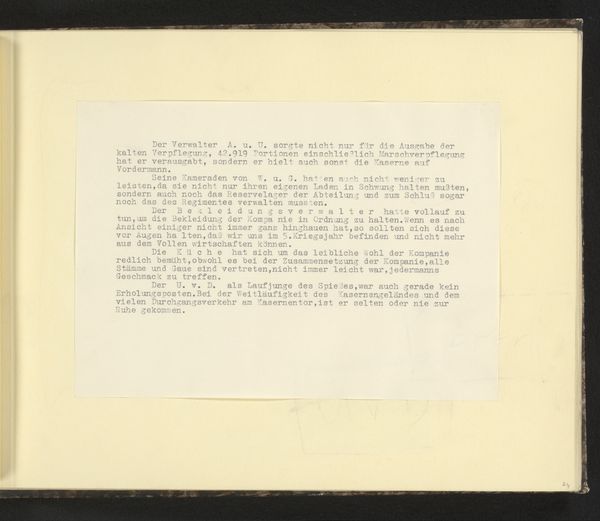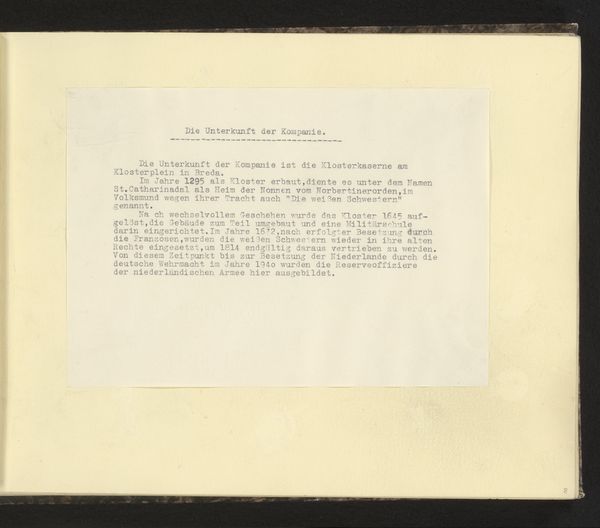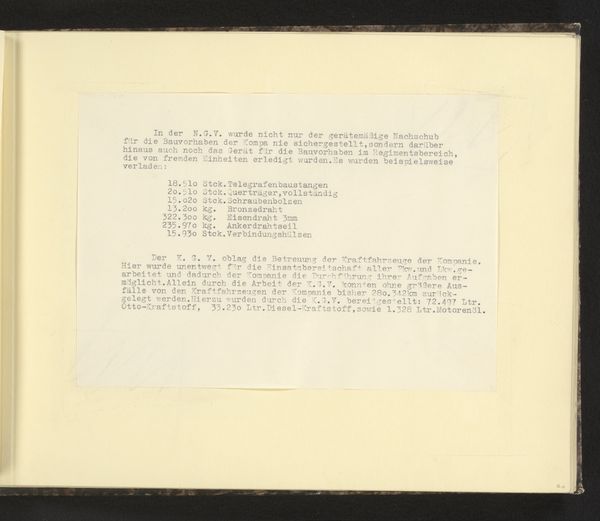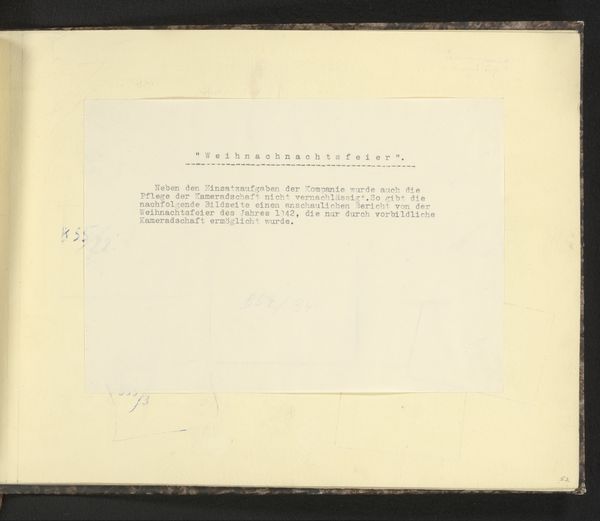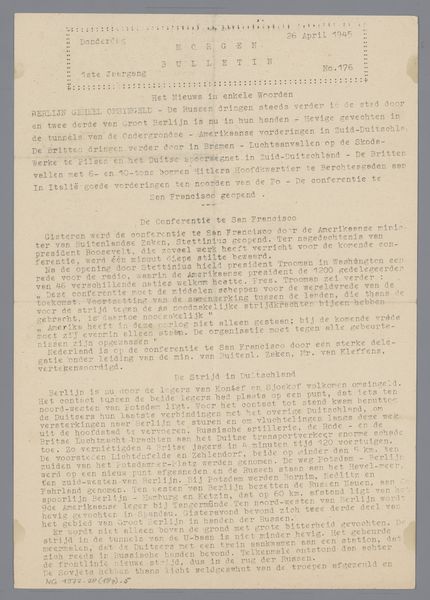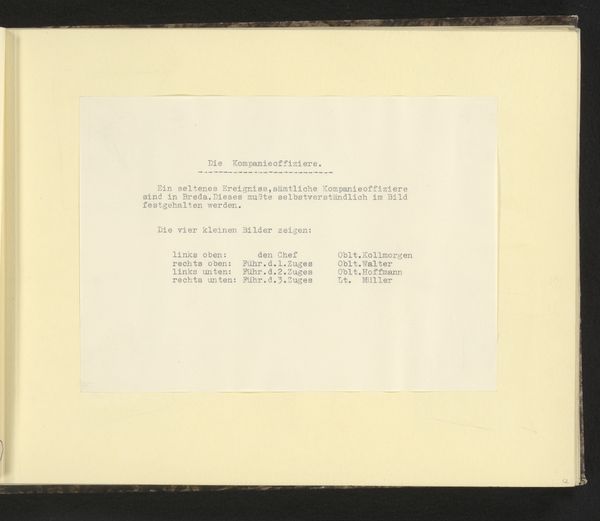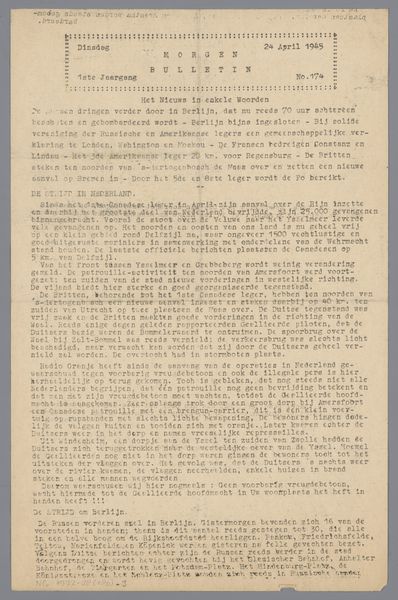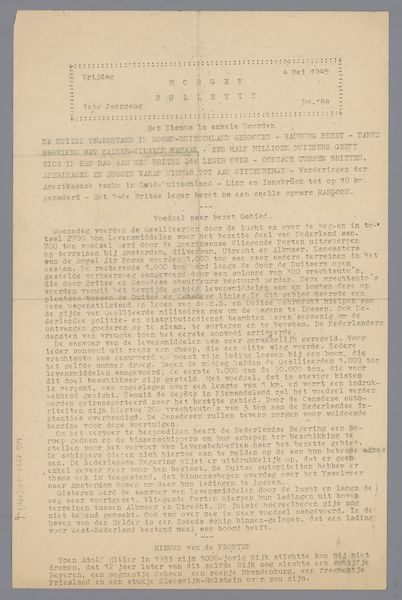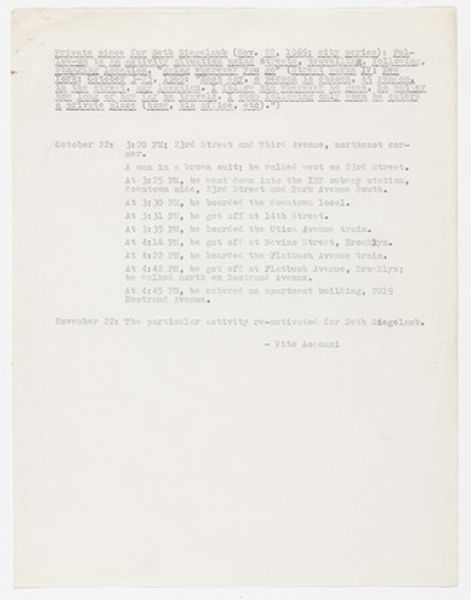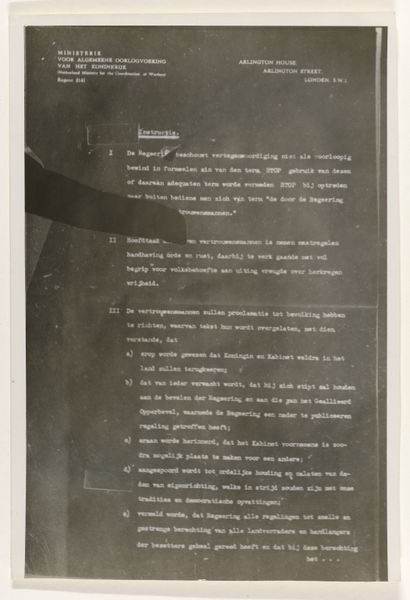
drawing, graphic-art, paper, typography
#
drawing
#
graphic-art
#
aged paper
#
homemade paper
#
script typography
#
paperlike
#
hand drawn type
#
personal journal design
#
paper
#
personal sketchbook
#
typography
#
hand-drawn typeface
#
thick font
#
history-painting
#
thin font
#
modernism
Dimensions: height 150 mm, width 213 mm, height 230 mm, width 315 mm
Copyright: Rijks Museum: Open Domain
Curator: This looks to be "Tekst over Breda," created between 1942 and 1943, employing drawing and graphic art techniques on paper. I’m struck by its rawness; it almost feels like a personal journal entry rather than a formal piece. What do you make of it? Editor: The aged paper gives it an interesting weight, a tangible sense of history. It’s presented almost as a historical document rather than an artistic composition, and I’m wondering about its intended function? Curator: Exactly! Note the homemade paper, the script typography, and the overall hand-drawn quality. Consider the material conditions in Europe during those years. How might wartime shortages have impacted the artist's choice of materials and their very process of making? Editor: So, the limitations in resources could have shifted the focus to accessible materials and more intimate methods, like drawing and typography? Curator: Precisely. And the act of handwriting and typography becomes a significant form of labor and potentially resistance. Think about the contrast between mass-produced, official documents, and this handcrafted account. Who produced this text and why, is it about reclaiming control over narratives and historical records during a time of immense disruption and propaganda? Editor: That’s a great point. Focusing on the materials used highlights the limitations of the period, as well as a personal engagement with history itself. So, instead of solely looking at the textual content as information, the emphasis is shifted toward the physicality and the conditions of production, prompting thoughts on control, and means of expression amid limitations. Curator: Indeed! By examining the materials and the artist’s process, we move beyond a simple reading of history to understanding how that history was experienced, recorded, and perhaps even resisted at a grassroots level. This, for me, is what makes this seemingly simple piece so compelling. Editor: I never thought about analyzing a text this way before, it's so revealing. I will look differently from now on!
Comments
No comments
Be the first to comment and join the conversation on the ultimate creative platform.
